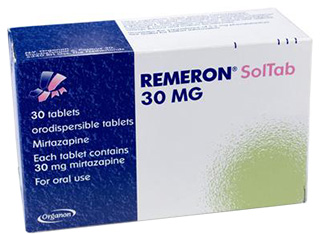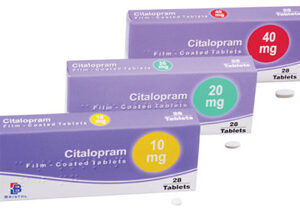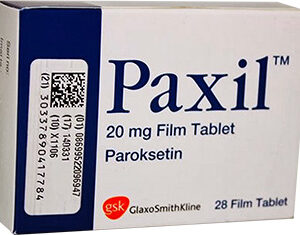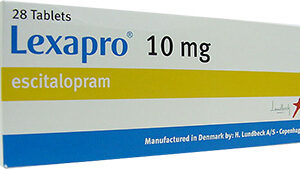Remeron Medication Overview
Remeron is the trade name for mirtazapine, which is an antidepressant medication that belongs to a class of drugs known as noradrenergic and specific serotonergic antidepressants (NaSSAs). It is primarily used to treat major depressive disorder (MDD) and can also be used for other off-label indications such as anxiety and insomnia.
Chemical Composition
Mirtazapine is a tetracyclic piperazino-azepine compound, chemically designated as 1,2,3,4,10,14b-hexahydro-2-methylpyrazino[2,1-a]pyrido[2,3-c][2]benzazepine. It has a molecular weight of 265.36 and exists in a racemic mixture.
Therapeutic Mechanism of Action
Mirtazapine acts by enhancing central noradrenergic and serotonergic activity. It antagonizes central presynaptic alpha-2 adrenergic inhibitors, which increases the release of serotonin and norepinephrine. It also antagonizes serotonin receptors 5-HT2 and 5-HT3 while enhancing 5-HT1 activity, which leads to antidepressant effects. Furthermore, mirtazapine’s antagonism at H1 histamine receptors contributes to its sedative properties.
Available Dosage Forms
Remeron is available in the form of tablets and is also available in an orally disintegrating tablet form known as Remeron SolTab. Tablet strengths include 15 mg, 30 mg, and 45 mg of mirtazapine.
Dosage and Administration
Patients usually start with a dose of 15 mg, taken once daily, preferably in the evening before bedtime due to the sedative effects of the drug. The dosage may be increased, based on the patient’s response and tolerability, to a maximum of 45 mg per day. Dosage adjustments should be made cautiously on an individual patient basis to maintain the patient at the lowest effective dose.
Pharmacokinetics
After oral administration, mirtazapine is rapidly absorbed, with peak plasma concentration being reached within approximately two hours. The bioavailability of mirtazapine is about 50%, primarily due to first-pass metabolism. It is extensively metabolized in the liver, and its metabolites are excreted in the urine and feces. The elimination half-life ranges from 20 to 40 hours, allowing for once-daily dosing. It is approximately 85% bound to plasma proteins.
Use in Specific Populations
Elderly patients may require lower doses of mirtazapine due to reduced clearance. Dose adjustments are also recommended for patients with renal or hepatic impairment as these conditions can alter the drug’s metabolism and excretion. Remeron should be used with caution in these populations, and close monitoring for adverse effects is warranted.
Drug Interactions
Mirtazapine can interact with monoamine oxidase inhibitors (MAOIs), leading to potentially life-threatening conditions such as serotonin syndrome. Concomitant use with other central nervous system (CNS) depressants may enhance sedation and CNS depression. It is also important to avoid co-administration with CYP3A4 inhibitors or inducers, as this may affect mirtazapine’s concentration. Careful monitoring or dose adjustments may be necessary when Remeron is used with other medications that affect serotonin levels or when used with anticoagulants.
Adverse Reactions and Side Effects
Common adverse reactions to mirtazapine include somnolence, increased appetite, weight gain, and dizziness. Less common but more serious adverse effects can include agranulocytosis, seizure, and hyponatremia. Because of the sedative effects of Remeron, caution should be exercised when performing tasks that require alertness, such as driving or operating heavy machinery.
Special Considerations
As with other antidepressants, mirtazapine carries a boxed warning regarding an increased risk of suicidal thinking and behavior in children, adolescents, and young adults during initial treatment. Regular monitoring for worsening depression or emergent suicidality is essential, especially during the first few months of treatment or when changing doses.
Monitoring Parameters
Patient response to therapy should be monitored regularly, including assessment for improvement of depressive symptoms. Body weight should be monitored due to the potential for significant weight gain. Blood counts may be monitored in patients with a history of neutropenia, and hepatic enzymes should be tested periodically to monitor liver function. It is also advisable to monitor lipid profiles in patients experiencing increased appetite or weight gain.
Counseling Points for Patients
Patients should be counseled to take mirtazapine as prescribed, at the same time each day. It is important to continue taking Remeron even if they feel well and not to abruptly discontinue the medication without consulting a healthcare provider, as abrupt cessation may trigger withdrawal symptoms. Patients should also be advised of the potential side effects and to report any unusual symptoms or worsening mood to their healthcare provider promptly.







Reviews
There are no reviews yet.